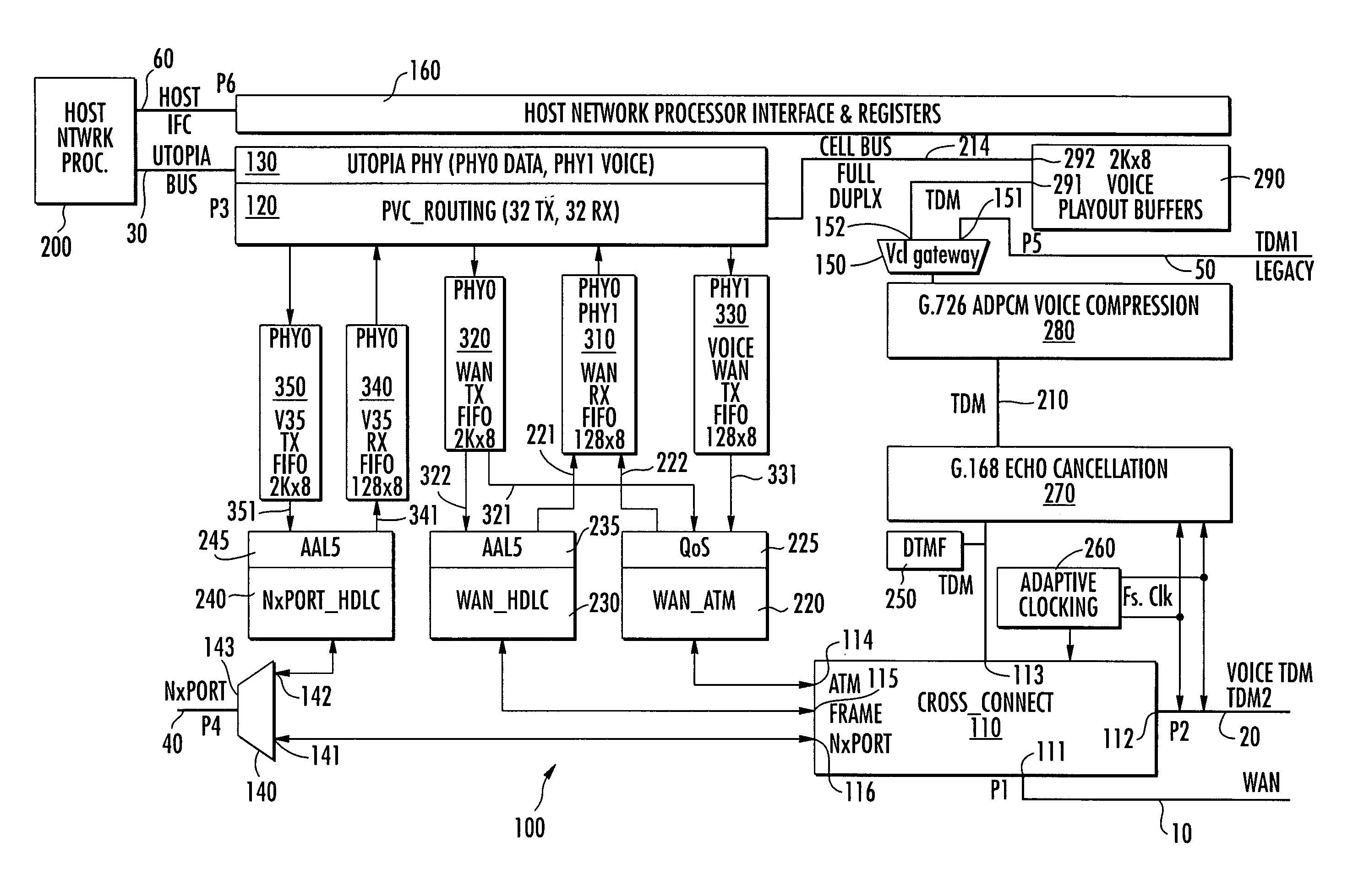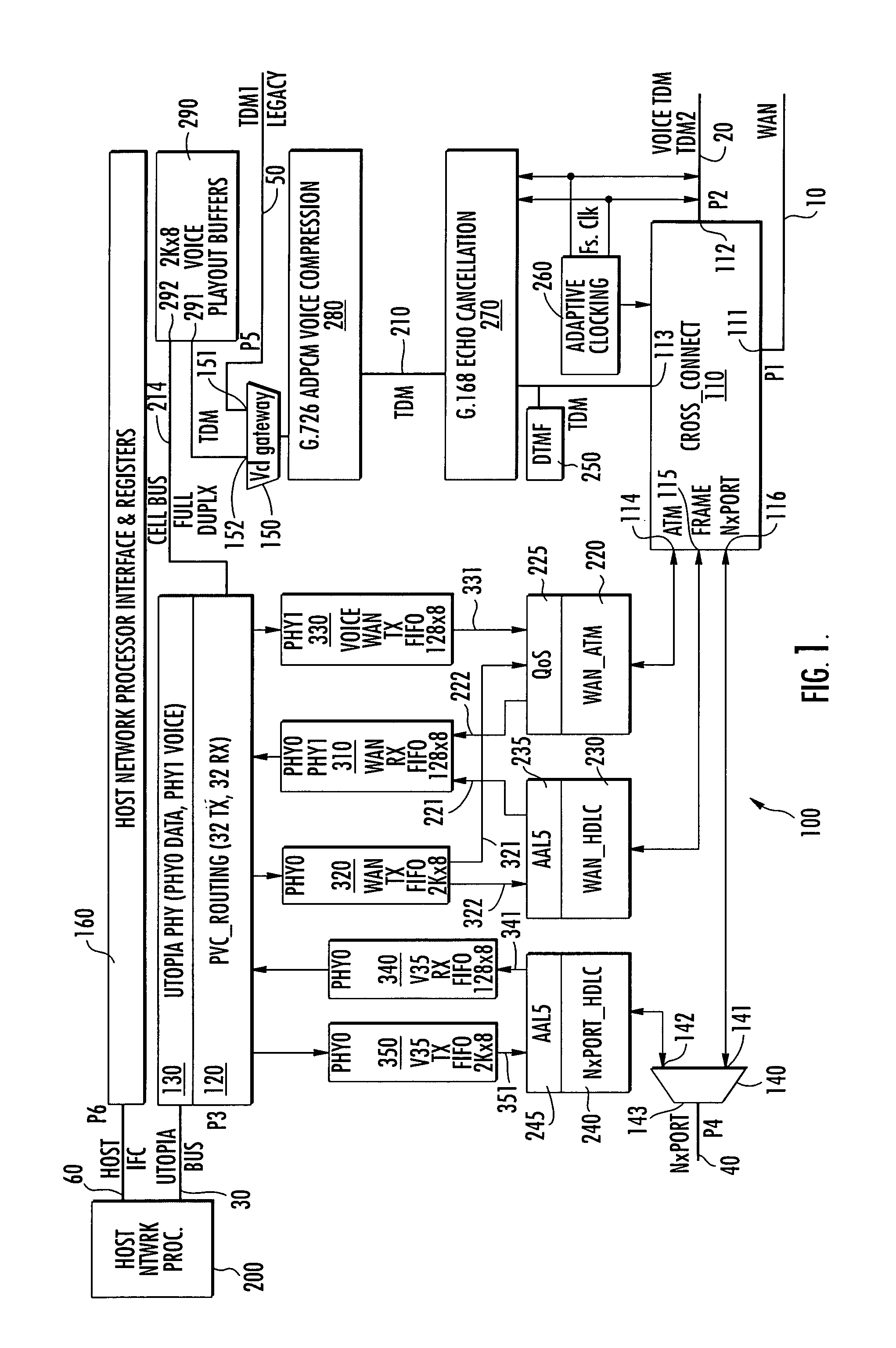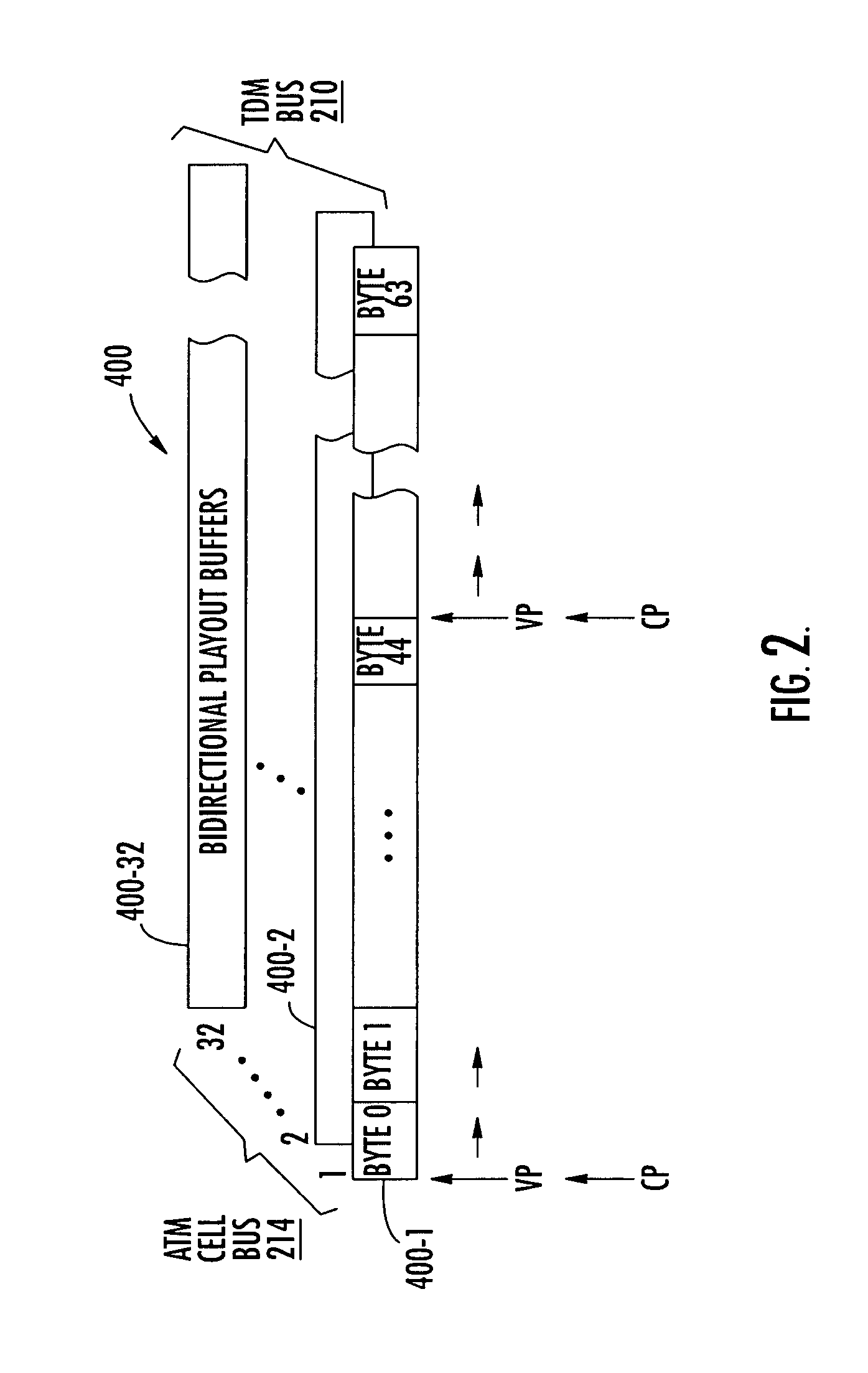[0005]In accordance with the invention detailed in the '402 application, these and other shortcomings of conventional IADs are effectively obviated by a new and improved ‘DSP-less’ IAD architecture, that is configured as a dual PHY-based signal transport ASIC, and offers enhanced
interfacing flexibility for multiple and diverse types of digital
communication circuits. To this end, the dual PHY based IAD architecture of the invention comprises a multi-protocol
communication interface (MCI) and an associated communication or
host network processor (HNP). The MCI is configured to execute diverse types of digital communication signaling interface functions with a plurality of communication ports, under the control of
supervisory control signals supplied via a generic,
host processor interface. Advantageously, the
host processor may be implemented using any one of a variety of reasonably priced, commercially available
network processor chips.
[0009]A third, UTOPIA port terminates a dual UTOPIA L2 PHY interface with a
byte-wide, ATM
cell-based UTOPIA
bus, that serves as the principal ‘data’ transport path with the
host network processor. The dual UTOPIA L2 PHY interface and its associated UTOPIA
bus operate at a
very high frequency (on the order of 25 MHz, which equates to a
data transport rate on the order of 200 Mbps) relative to network and terminal rates, that typically have data rates on the order of only 1.5-2.0 Mbps (e.g., a WAN rate of 2304 kbps). As such, signaling transport communications between the MCI and the
host network processor may be considered to effectively quasi-instantaneous, so that participation by the
host processor in the transport of both digitized voice and data communication signals over any of the routing paths among the signaling ports of the MCI will not burden (slow down) the operational speed of any of the
external communication circuits to which the IAD is ported.
[0013]The TDM voice gateway is also coupled to plurality of bidirectional voice playout buffers of a multi-channel voice playout buffer unit containing thirty-two channels of bidirectional FIFOs, each being sized to store a full ATM voice cell
payload, as well as accommodate
transport delay to and from the host
network processor. This serves to provide for an effectively
continuous flow and conversion of TDM communication signals on the
TDM bus with ATM cells interfaced with dual UTOPIA L2 PHY interface over a full duplex ATM cell
bus therebetween.
[0017]As result, since it operates at a considerably higher speed than the
TDM bus, the host processor is expected to return a response ATM voice cell containing 44 bytes of TDM data to the playout buffer, well prior to voice pointer reaching the end of the twenty cell window of the playout buffer, even though there may be some
byte differential (one to twenty bytes, in the present example of a 64 bytes capacity playout buffer) between the current location of the voice pointer (VP) and that of the cell pointer (CP). This flexibility offered by the practical size of the playout buffer greatly reduces the cost and complexity of the digitized voice transport path. Namely, as long as this ‘turn-around’ differential remains within the twenty
byte window, continuity of voice packet flow (with no overflow and no underflow) will be effectively maintained throughout the call. If a return cell is not ready to send, the host processor resends the last transmitted cell, to maintain continuous voice cell flow.
[0025]In the transmit direction (outgoing to the WAN from the
network processor), the WAN ATM
transceiver selectively interfaces to the WAN, either ATM data cells from the DTX FIFO or ATM voice cells from a voice transmit (VTX) FIFO. The VTX FIFO may also have a relatively small depth of 128 bytes due to the considerably higher speed of the UTOPIA L2 PHY bus. On the other hand, the data TX FIFO may have a much larger depth (e.g., on the order of 2K bytes), for buffering a relatively large number of cells or frames of data (such as a full size
Ethernet frame with ATM overhead); this serves to accommodate transmission priority given to the voice TX FIFO, and helps to alleviate UTOPIA PHY0 backpressure at the host processor.
 Login to View More
Login to View More  Login to View More
Login to View More 


